One of the interesting facts about Aboriginal languages is that many people would not be aware that they are already saying Aboriginal words!!
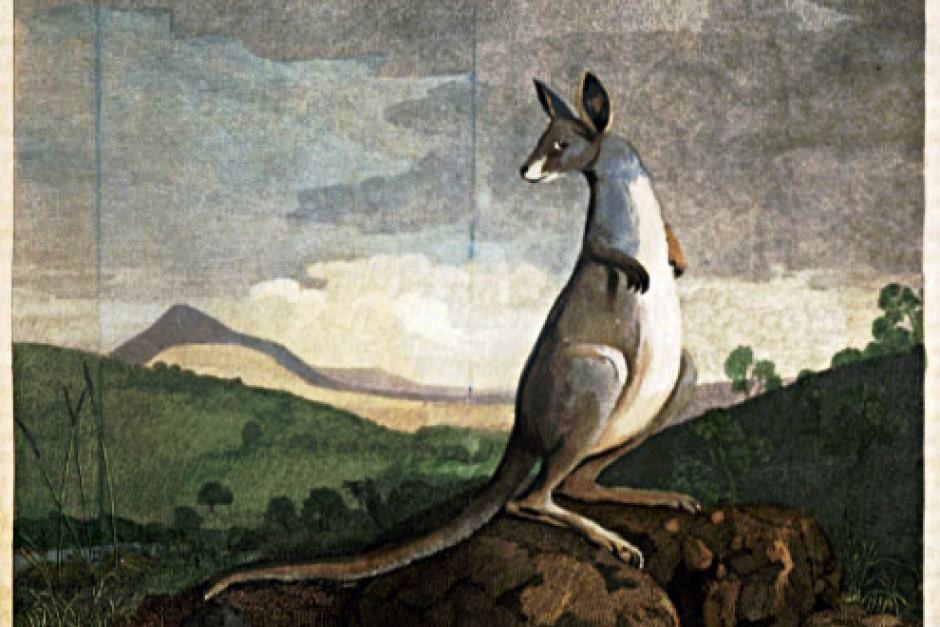
Captain Cook's Journal Saturday 23 July, 1770 - One of the Men saw an Animal something less than a greyhound; it was of a Mouse Colour, very slender made, and swift of Foot. On Saturday 4 August, Cook wrote in his journal that the animal was 'called by the Natives Kangooroo, or Kanguru'; thus becoming the first Aboriginal loanword into English!
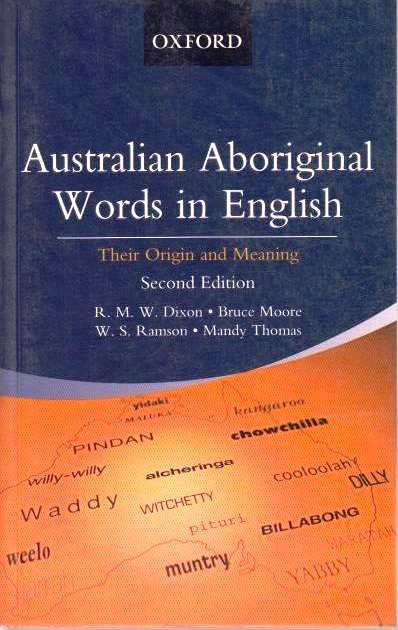
Following on from NAIDOC Week 2015, one of the interesting topics that comes up in discussions is the number of words from Aboriginal and Torres Strait Islander languages that are commonly used in English. The above image shows the publication Australian Aboriginal words in English which lists over 400 words from 71 Aboriginal languages now in everyday use across Australia.

Placenames are obvious ones - the general rule being if it ends in '-dah/-da' or '-bah/-ba', it is an Aboriginal word meaning 'place of'; examples include Pinkenba = 'place of long-necked turtle', Elimbah = 'place of grey snake'. Other placenames may have significance to people, such as Wamuran, Obi Obi and Guthalungra which were named after local Aboriginal identities. The image above shows a sign at Boulia listing distances to other centres, many of which are Aboriginal in origin, e.g. Windorah, Bedourie, Coorabulka, Dajarra, Urandangie, etc.
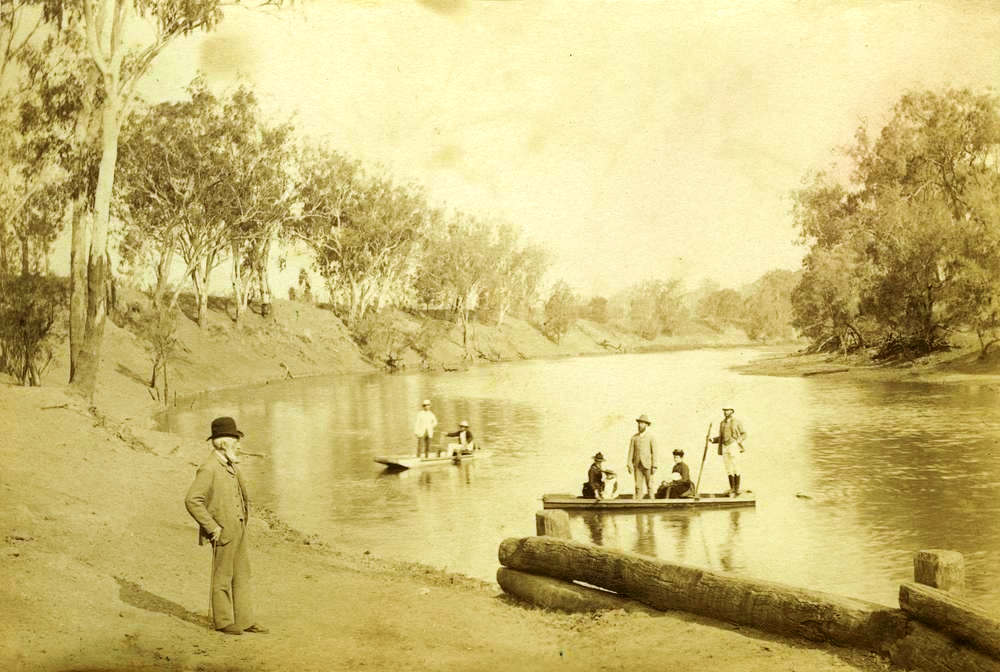
There are also placenames that tell a story about the landscape - Burgowan means 'flat where there are dogwood trees'; Wandoan refers to a 'flat where grey possums are plentiful'; while Goondiwindi (above image) is named after a point on the McIntyre River where waterbirds used to nest and refers to the bird droppings on the rocks.
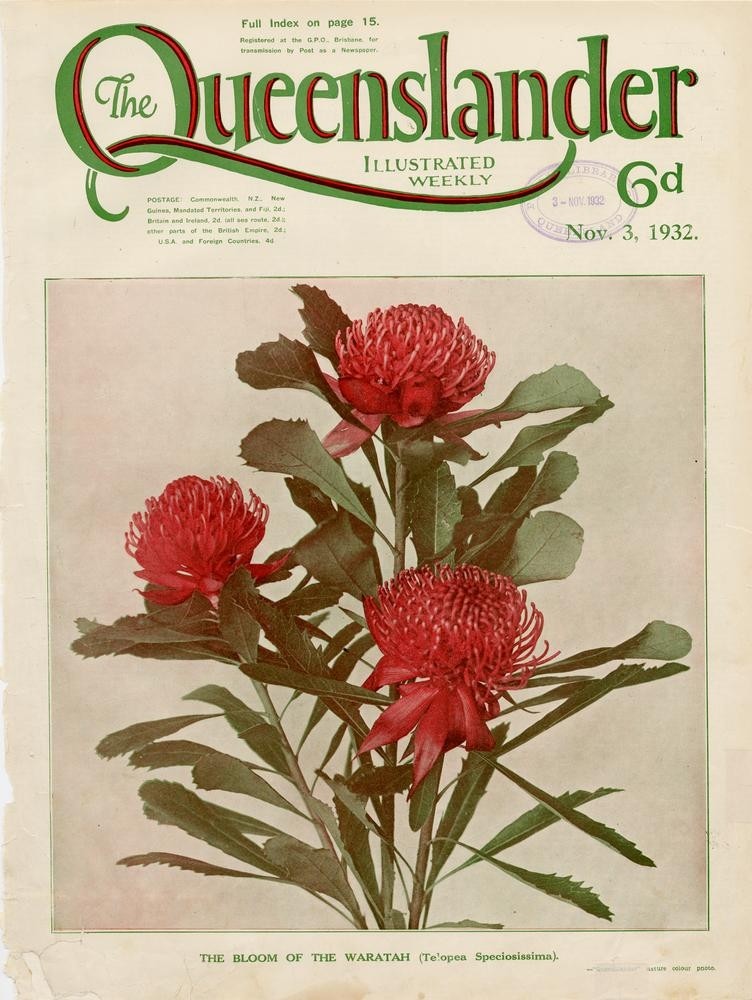
Possibly, the most popular Aboriginal loanwords are plants and animals which are now in everyday use. This is understandable as early settlers, explorers and others would need to discover the animals and plants in this unknown Australian landscape.
Plants
- bumble tree - from Gamilaraay/Yuwaalaraay languages of North-West NSW
- bunya - from Yuggera language of Brisbane region
- conkerberry - from Mayi-Yapi / Mayi-Kulan languages of Cloncurry region
- coolabah - from Yuwaalayaay language of North-West NSW
- cunjevoi - from Bundjalung language of Northern NSW
- kurrajong - from Dharug language of Sydney region
- mallee - from Wemba-wemba language of Western Victoria
- midyim - from Yuggera language of Brisbane region
- muntries - from Gaurna language of Adelaide Plains, South Australia
- quandong - from Wiradjuri language of Central-West NSW
- wallum - from Kabi Kabi language of the Sunshine Coast
- waratah - from Dharug language of Sydney region
Animals
- barramundi - from Gangulu language of Central Queensland
- bettong - from Dharug language of Sydney region
- bilby - from Yuwaalaraay language of North-West NSW
- brolga - from Gamilaraay language of North-West NSW
- bunyip - from Wathawurung language of Geelong Region, Victoria
- chowchilla - from Dyirbal language of Tully region
- corella - from Wiradjuri language of Central-West NSW
- currawong - from Yuggera language of Brisbane region
- dingo - from Dharug language of Sydney region
- galah - from Gamilaraay language of North-West NSW
- kangaroo - from Guugu Yimidhirr language of Cooktown region
- koala - from Dharug language of Sydney region
- kookaburra - from Wiradjuri language of Central-West NSW
- quoll - from Guugu Yimidhirr language of Cooktown region
- taipan - from Wik Mungkan language of Western Cape York
- yabby - from Wemba-wemba language of Western Victoria
- yowie - from Yuwaalaraay language of North-West NSW
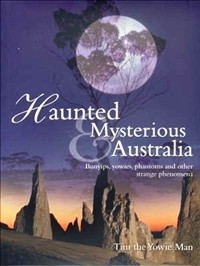
Often Aboriginal weapons or implements are given universal names from the first point of contact; these names are then adapted and used in other regions. A good example is boomerang which originates from the Dharug language of the Sydney region: each language group across Australia had their own name barran ; burragunn ; burgan ; munyan ; winchi ; and so on. Roth, in the image below, identifies wongala as the local Yuwibara word for boomerang in the Port Mackay region.
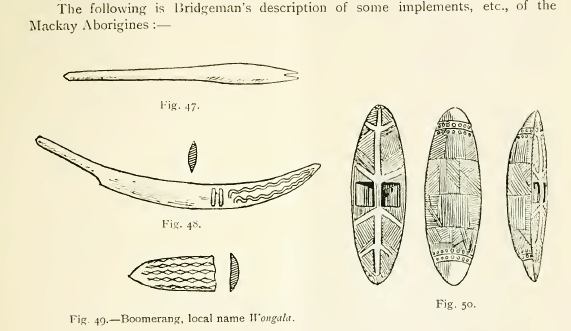
A similar situation arose with woomera and waddy which both also originated from the Dharug language of the Sydney region. Dixon, et al in their publication Australian Aboriginal Words in English identify that the majority of Aboriginal loanwords come from the Sydney Region, particularly Dharug. Given this was the first point of contact with Aboriginal people, it naturally follows that Sydney languages were the first documented in colonial accounts.
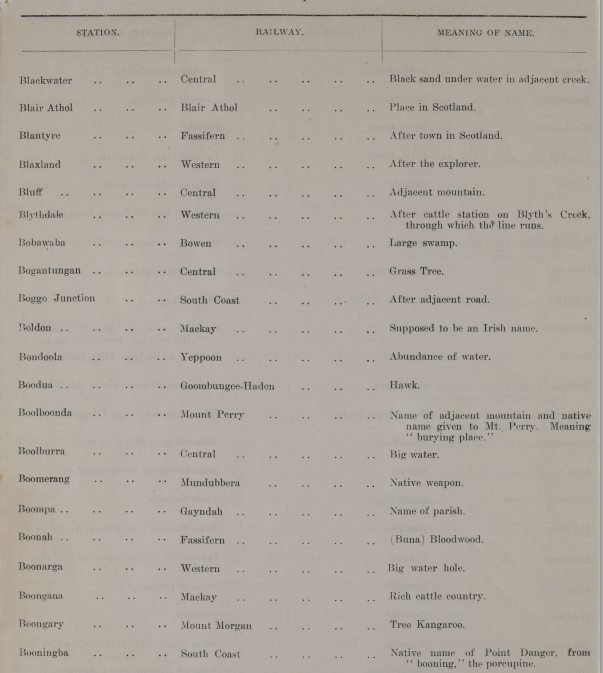
Within the State Library collections, there is quite a range of original material from this early period through to contemporary research which identifies the source and origins of Aboriginal words in English as well as placenames and other applications for loanwords. Additionally, the State Library has developed a Research Guide to assist people wishing to discover more about Aboriginal loanwords.
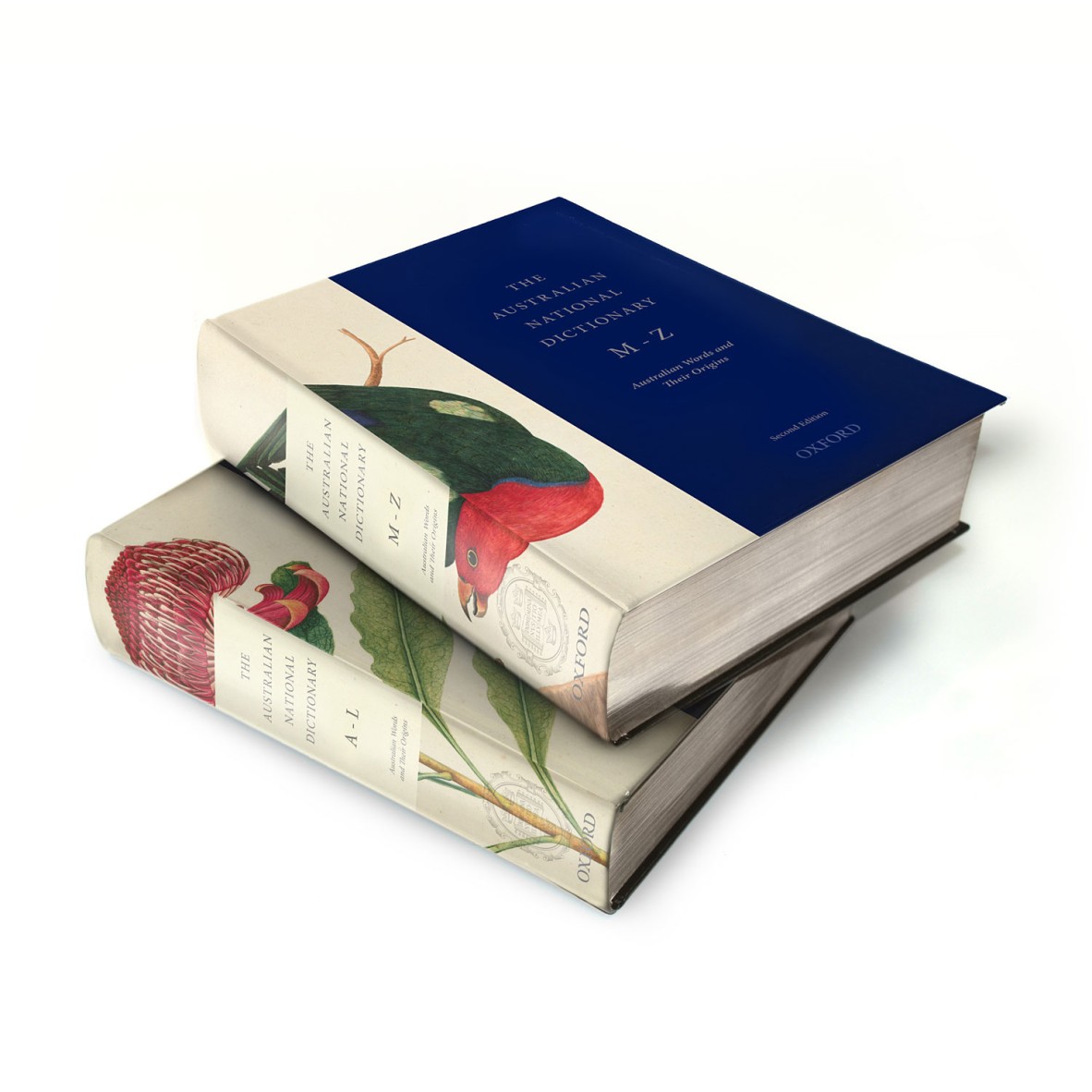
The latest edition of the Australian National Dictionary (August 2016) includes over 550 words from 100 Aboriginal and Torres Strait Islander languages!
State Library extends an invitation for all Queenslanders to find out more about Aboriginal and Torres Strait Islander languages, including loanwords at Spoken: celebrating Queensland languages.
Desmond Crump
Indigenous Languages Coordinator, State Library of Queensland
State Library of Queensland Aboriginal and Torres Strait Islander Languages Webpages
State Library of Queensland Aboriginal and Torres Strait Islander Languages Map
Jarjum stories: A kuril dhagun showcase focusing on children’s books and Aboriginal and Torres Strait Islander languages. 19 October 2019 to 10 May 2019.
Spoken: celebrating Queensland languages: A major exhibition exploring the survival and revival of Aboriginal and Torres Strait Islander languages throughout Queensland. Join in the many talks and events to celebrate the rich and diverse languages spoken today. 21 November 2019 to 19 April 2020.
References and Further Reading
Banks, J. and Dalton, J. D. (2011) Journal of the Right Hon. Sir Joseph Banks during Captain Cook's First Voyage in H.M.S. Endeavour in 1768-71. 910.41 BAN 2011
Banks, J. and Beaglehole, J. C. (1962) Endeavour journal of Joseph Banks 1768-1771. J 910.910.0461 BAN
Bull, T. (2006) Haunted and mysterious Australia: Bunyips, yowies, phantoms and other strange phenomena. Q 001.94 TIM
Cook, J. and Wharton, W.J. L. (1968) Captain Cook's journal during his first voyage round the world, made in H.M. Bark Endeavour, 1768-71 : a literal transcription of the original mss. / With notes and introduction edited by Captain W.J.L. Wharton. Q 910.4 COO
Dixon, R. M. W. (1991) Words of our country : stories, place names and vocabulary in Yidiny, the Aboriginal language of the Cairns-Yarrabah region. G 499.15 1991
Dixon, R. M. W., Moore, B., Ramson, W. and Thomas, M. (2006) 2nd edn. Australian Aboriginal Words in English. J 499.15 AUS
Hercus, L., Hodges, F. and Simpson, J. (2002) The land is a map: placenames of Indigenous origin in Australia. Q 919.4003 LAN
On the banks of the McIntyre River (1880): JOL Image No. APE-073-0001-0001
Queensland Place Names Board (1963) Interim Gazetteer of Queensland Place Names. REF 919.43 1963
Queensland Railways (1914) Nomenclature of Queensland Railway Stations. GSB 929.409943 1914
Road Sign, Boulia. JOL Negative No. 201070
Roth, H. L. (1908) The discovery and settlement of Port Mackay, Queensland. Q 994.36 ROT
Roth, W. E., (1909) North Queensland ethnography. Bulletin no. 13. Fighting weapons. RBQ 306.089 ROT
'The Bloom of the Waratah', Queenslander - 3 November 1932. Image number: 702692-19321103-s001b
Comments
Your email address will not be published.
We welcome relevant, respectful comments.